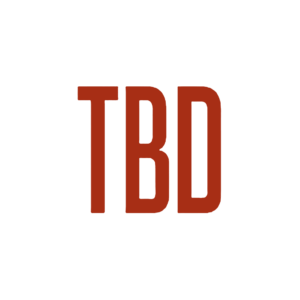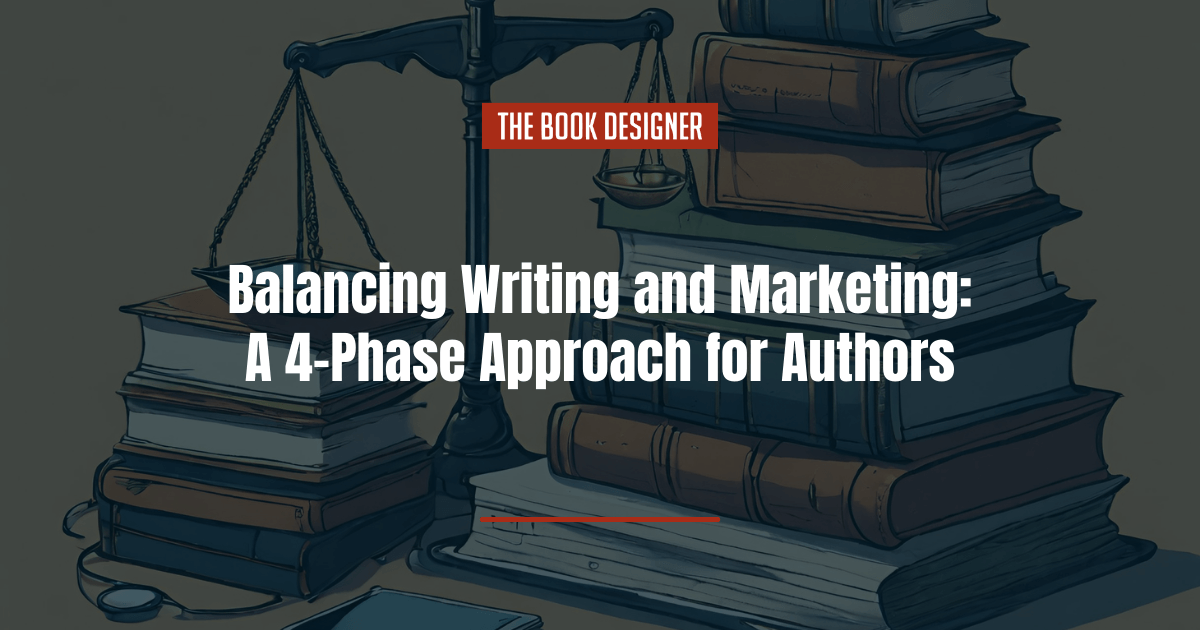Balancing writing and marketing: a tale as old as time for authors in the digital age.
Picture this: an author sits, pen in hand, weaving narratives by the flicker of a computer screen. Yet, in the next moment, they’re a savvy marketer, strategizing and connecting with readers online. This dance between the pen and the promotional poster is the heartbeat of modern authorship.
In this article, we explore the nuanced art of balancing writing and marketing, offering a guide to tread this dual path with grace and effectiveness. Welcome to the writer’s path—where every step is a story, and every story needs a stage.
Below, we’ll talk about balancing writing and marketing by breaking it into four phases:
The Challenge of Dual Roles
In the life of an author, balancing writing and marketing is not just a task but a significant career challenge. This dual role is akin to maintaining two full-time jobs, each demanding unique skills and attention. On one hand, there’s the creative and introspective process of writing, requiring solitude, focus, and an uninterrupted flow of ideas. Writing a book is a journey of self-expression and storytelling, often nurtured in quiet, reflective spaces.
On the other hand, marketing a book is an outward-facing endeavor. It requires authors to step into the spotlight, engage with readers and the media, and promote their work. Marketing involves a variety of tasks—setting up social media accounts, organizing book signings, engaging in interviews, and connecting with book reviewers and influencers. These activities demand a different set of skills including communication, networking, and a strategic mindset.
The challenge intensifies when these roles overlap. For example, during the peak creative phases of writing, an author might be required to engage in marketing activities for their previous work. This can lead to a conflict of interests and energies. An author deeply immersed in the world of their new book might find it jarring to switch gears and promote an earlier work. The shift from a solitary, creative process to a public, promotional one can be abrupt and disorienting.
Furthermore, the pressure to succeed in both arenas can be immense. The success of a book in the market often influences an author’s reputation and future opportunities. Conversely, the quality and appeal of their writing determine the long-term engagement of their readership. Balancing these two roles effectively requires not just time management but also emotional and mental agility.
Authors often find themselves torn between the urge to write and the necessity to market. Each role demands time and energy, and prioritizing one over the other can feel like a risk. Neglecting marketing might mean a well-written book goes unnoticed, while insufficient writing time can lead to a rushed or subpar sequel.
Balancing writing and marketing is a multifaceted challenge that goes beyond mere time management. It’s about managing two very different mindsets and skill sets, often under the pressure of deadlines and expectations. Authors must navigate this complex dynamic to build a successful author career that satisfies both their creative aspirations and market demands.
Phase One: Focus on Marketing
Phase One of balancing writing and marketing, lasting three to four months, is a crucial period dedicated exclusively to marketing the author’s current book. This phase is pivotal for establishing the book’s presence in the market and creating a foundation for future sales and readership growth.
- Strategic Marketing Activities: During this phase, authors should engage in targeted marketing activities. This includes social media campaigns, arranging book readings or signings, connecting with book clubs, and seeking opportunities for media exposure. The goal is to create buzz and visibility for the book.
- Building an Online Presence: Authors should focus on building a robust online presence and author platform. This involves regularly updating websites and social media platforms, engaging with readers, and creating content that adds value to their audience. A strong online presence can significantly impact an author’s ability to attract and retain readers.
- Networking and Collaborations: Phase One is also a time for networking. Authors can collaborate with other writers, participate in literary events, and connect with industry professionals. Networking can open doors to new opportunities, such as speaking engagements or collaborative projects, which can further boost the book’s visibility.
- Gathering Reviews and Feedback: Actively seeking book reviews and feedback is essential. Positive reviews on platforms like Amazon and Goodreads can enhance the book’s credibility and attract more readers. Authors can encourage readers to leave reviews and engage with them to gain valuable insights into their audience.
- Analyzing and Adjusting Strategy: Throughout this phase, authors should monitor the effectiveness of their marketing strategies. This analysis involves tracking sales, website traffic, and engagement on social media. Based on this data, authors can adjust their strategies to maximize their reach and impact.
Phase One is a time of intense marketing effort, requiring authors to put their writing on the back burner temporarily. The success of this phase sets the stage for a smooth transition back to writing in Phase Two, with the confidence that their book has gained a solid foothold in the market.
Phase Two: Return to Writing
Phase Two, spanning approximately three months, marks a return to the heart of an author’s passion: writing. After an intensive period of marketing, this phase allows authors to re-immerse themselves in the creative process.
- Refocusing on the Creative Process: This period is about reconnecting with the art of storytelling. Authors should dedicate their time to developing plots, fleshing out characters, and refining their narratives. It’s a time to dive deep into the creative process without the distraction of marketing tasks.
- Setting Writing Goals: Establishing clear, achievable writing goals during this phase is crucial. Whether it’s completing a certain number of chapters or reaching a specific word count, these goals help authors stay focused and productive.
- Maintaining a Writing Routine: Establishing and adhering to a regular writing schedule is vital. Consistency is key to making significant progress. This routine could involve setting aside specific hours each day or dedicating certain days of the week exclusively to writing.
- Balancing Writing with Minimal Marketing: While the primary focus is on writing, authors shouldn’t entirely abandon marketing. Continuing to engage with readers through social media or blog updates can maintain interest and momentum. However, these activities should be minimal and not detract from writing time.
- Seeking Feedback and Refinement: Phase Two is also a time for authors to seek feedback on their new work. This can be from beta readers, writing groups, or editors. Constructive feedback is essential for refining and improving the manuscript.
By the end of Phase Two, authors should have made substantial progress on their new manuscript, capitalizing on the market presence established in Phase One. This phase is about striking a balance, primarily focusing on writing while keeping a minimal yet effective engagement with the marketing front.
Phase Three: Re-evaluate and Optimize Marketing Strategies
In Phase Three, which continues until the end of the first year after a book’s release, authors shift their focus to evaluating and optimizing their marketing strategies based on the outcomes observed in the earlier phases.
- Assessment of Marketing Efforts: This phase involves a thorough analysis of the marketing activities undertaken in Phase One. Authors need to identify which strategies were most effective in terms of increasing visibility, sales, and reader engagement.
- Streamlining Marketing Activities: Based on the assessment, authors should streamline their marketing efforts. This means focusing on the two or three most successful strategies, whether they be social media campaigns, email marketing, or public readings, and discarding less effective ones.
- Continued Engagement with Audience: Even as marketing efforts are streamlined, maintaining a connection with the audience remains crucial. Regular updates, interactions, and content sharing on various platforms ensure that the audience remains engaged and interested in the author’s work.
- Preparing for the Next Book Launch: This phase is also a preparatory period for the launch of the next book. Authors can start creating a buzz about their upcoming work, using insights gained from previous marketing efforts to shape a more effective launch strategy.
- Balancing Ongoing Writing: While marketing is a key component of Phase Three, authors should continue to make progress in their writing. This ongoing writing process ensures that new content is ready for the audience cultivated through marketing efforts.
Phase Three is a critical time for fine-tuning marketing strategies to ensure that they are as effective and efficient as possible, while also setting the stage for future book releases.
Phase Four: Submission of the Next Novel
Phase Four, marking the end of the first year after the previous book’s release, is a significant milestone for authors. This phase is characterized by a full transition back to the core of being an author—finalizing and self-publishing the next novel.
- Finalizing the Manuscript: This period is dedicated to putting the finishing touches on the new novel. Authors should focus on revisions, editing, and ensuring that the manuscript reflects their best work.
- Pausing Marketing Activities: In Phase Four, marketing activities for the previous book are significantly reduced or paused. This allows authors to devote their full attention and energy to completing their new work.
- Planning the Next Book Launch: As the new novel nears completion, authors should start planning its launch. This involves considering the lessons learned from the previous year’s marketing efforts and applying them to develop a more effective strategy for the upcoming book.
- Rest and Reflection: It’s also important for authors to take time to rest and reflect after a year of balancing intense writing and marketing efforts. This period of reflection is crucial for maintaining creativity and enthusiasm for future projects.
By the end of Phase Four, authors should be ready to publish their new novel, having successfully balanced the demands of writing and marketing throughout the year. This phase signifies a moment of accomplishment and the beginning of a new cycle in the author’s career.
Final Thoughts on Balancing Writing and Marketing
Balancing writing and marketing is an essential skill for modern authors, requiring strategic planning and a phased approach. By dividing their efforts into distinct phases – focusing solely on marketing, returning to writing, optimizing marketing strategies, and preparing for the next book submission—authors can manage these dual responsibilities effectively.
A structured approach not only enhances productivity but also ensures that neither writing nor marketing efforts are neglected. Ultimately, mastering the art of balancing writing and marketing is key to an author’s success, enabling them to thrive creatively while building a strong presence in the literary world.
Editor’s note: This article was originally written by Gila Green in 2018 but has been rewritten and updated by The Book Designer editorial team.




